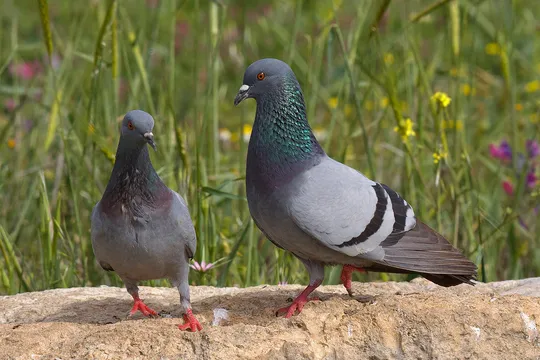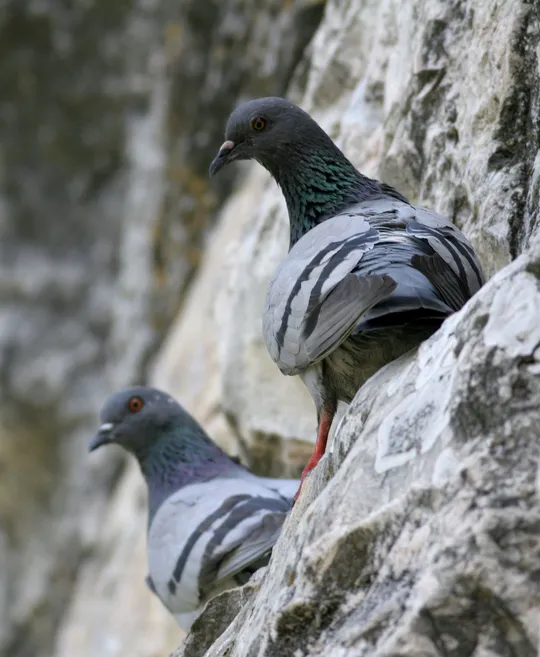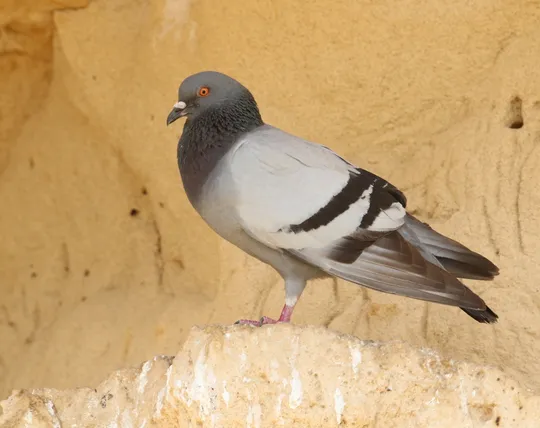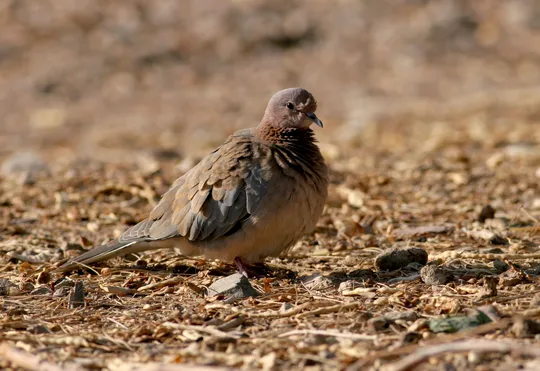Columba livia
 Data Deficient
Data Deficient



| Habitats | Desert Cliffs, Mediterranean Cliffs, Rural Areas |
|---|---|
| Presence In Israel | Resident |
| Breeding In Israel | Breeder |
| Migration Types | Resident |
| Zoographical Zones | Mediterranean, Irano-Turanian, Saharo-Arabian, Sudani |
| Landscape Types | Mountainous, Cliffs, Rural Area, Urban |
| Vegetation Densities | Low |
| Nest Locations | Cliffs, Buildings |
| Diet Types | Herbivore |
| Foraging Grounds | Ground |
| Body Sizes | Small (up to 500g) |
| Threat Factors | Inbreeding with Feral |
The Rock Dove is a common resident throughout Israel, but most of the populations are apparently mixed with feral pigeons. Until the mid-20th century, the Rock Dove was a very common resident species. Flocks of thousands (of the pure wild morph) could be seen throughout the country. The expansion of settled areas, from the mid-20th century was associated with expansion of domesticated pigeons that intermingle with flocks of Rock Doves and produce hybrid offspring. In the 1980s, it was still possible to see large uniform (tens and hundreds) flocks of pure Rock Doves. These untainted populations became ever rarer as settled and agricultural areas expanded, and domestic and feral pigeons spread. In recent years, almost no uncontaminated Rock Dove populations remain. In addition to the problem of genetic contamination in Rock Doves, there is also a general decline in their number compared to the late 19th century, when giant flocks were seen in eastern Judea, Samaria and the Galilee (Tristram 1864).
Rock Doves nest in mountainous, rocky and cliff areas throughout Israel, mainly east of the national watershed. They wander and forage in agricultural fields and grazing lands as well. The hybrid doves also nest in settlements throughout Israel.
- פז, ע. 1986. עופות. מתוך אלון, ע. (עורך), החי והצומח של ארץ ישראל. כרך 6. הוצאת משרד הביטחון, ישראל.
- פרלמן, י., שוחט, א. ולבינגר, ז. 2009. סקר אטלס ציפורים בערבה סיכום שנת 2009. דו"ח מרכז הצפרות של החברה להגנת הטבע.
- Shirihai, H., 1996. The Birds of Israel. Academic Press, London.
- Symes, A. 2013. Species generation lengths. Unpublished, BirdLife International.
- Species page at Birdlife International
Distribution maps
The maps presented here provide visual information on the distribution of species in Israel from the past and present, and the changes in occupancy and breeding density during the comparison period. For further reading
Relative Abundance 2010-2020
Breeding density values in the current decade as determined from experts' opinion and observations from databases.
| Data Missing | Sporadic | Limited Sites | Low Density | High Density |
|---|---|---|---|---|
| 8 | 12 | 12 | 21 | 19 |
Relative Abundance 1980-1990
Density values based primarily on the book The Birds of Israel (Shirihai 1996).
| Data Missing | Sporadic | Limited Sites | Low Density | High Density |
|---|---|---|---|---|
| 5 | 14 | 14 | 17 | 22 |
Occupancy 1990-2020
The map shows differences in the species breeding distribution between the 1980's breeding map and the current weighted breeding evaluation. Negative value - species previously bred in the grid and is not presently breeding; positive value - species has not previously bred in the grid and is currently breeding.
| Data Missing | No Change | Occupancy Increase | Occupancy Decrease |
|---|---|---|---|
| 6 | 35 | 1 | 9 |
Change in Relative Abundance 1990-2020
The map shows the changes in the relative abundance of a species in each of the distribution grids between the breeding map of the 1980s and the weighted current breeding evaluation. Negative values - decline in abundance; positive values - increase in abundance; zero - no change in abundance.
| 80 to 100 | 50 | 20 to 30 | No Change | 30- to 20- | 50- | 100- to 80- | Data Missing |
|---|---|---|---|---|---|---|---|
| 0 | 4 | 2 | 22 | 12 | 14 | 11 | 16 |
| Rarity | |
|---|---|
| Vulnerability | |
| Attractiveness | |
| Endemism | |
| Red number | |
| Peripherality | |
| IUCN category | |
| Threat Definition according to the red book |




